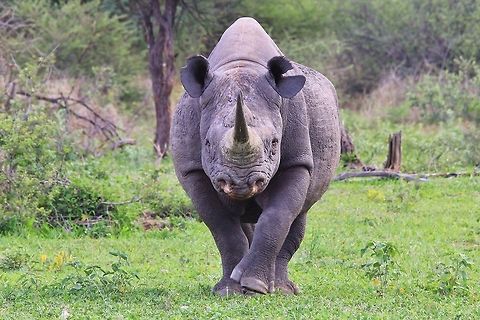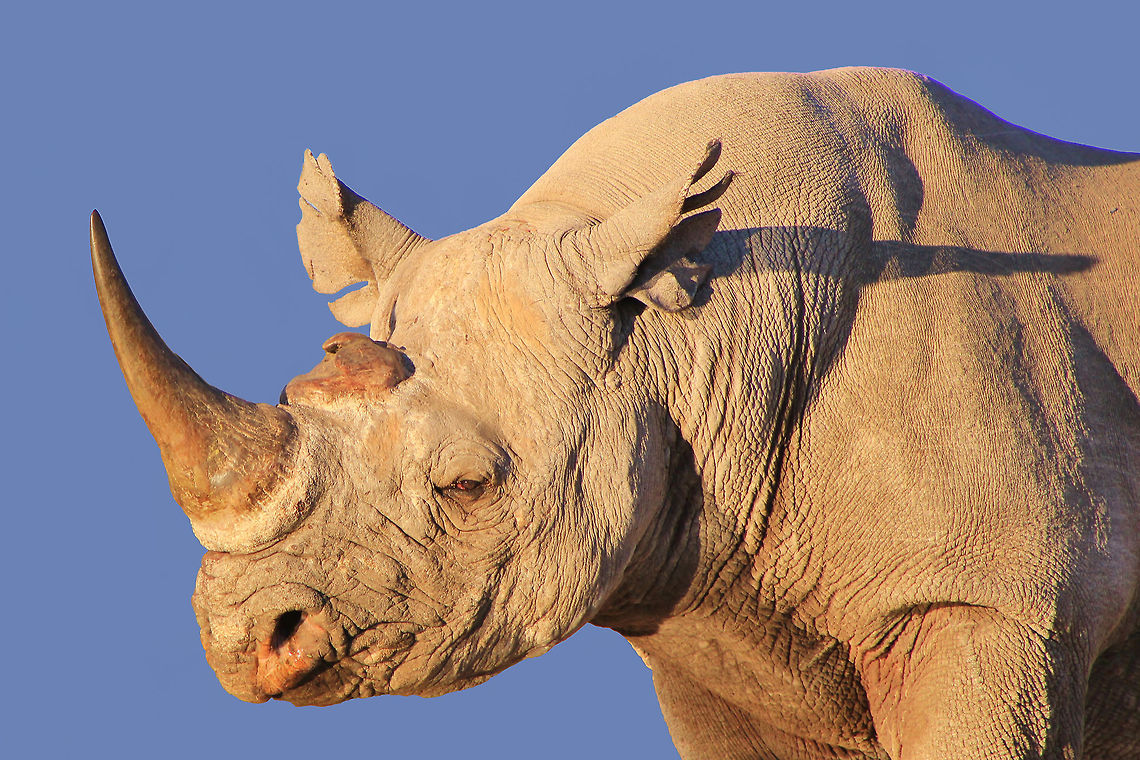
The black rhinoceros or hook-lipped rhinoceros, is a species of rhinoceros, native to the eastern and central areas of Africa including Kenya, Tanzania, Cameroon, South Africa, Namibia, Zimbabwe, and Angola. Although the rhino was referred to as "black", it is actually more of a grey/brown/white color in appearance.
Similar species: Odd-toed Ungulates
By Living Wild
All rights reserved
Uploaded Jan 4, 2015. Captured Aug 9, 2012 16:42.

comments (6)
Nature Conservation (Fish and Wildlife in Namibia) use to do ear notching, basically assigning every rhino a number, like an identification of each animal. Each animal then has his own "Birth Certificate", indicating date, parents, DNA samples etc. etc. It is a very organized system today, with micro and satellite chipping taking the place of the previous ear notching. Drones cover National Parks on a 24 hr basis, detecting change in heart beat, blood pressure etc. If anything goes wrong (health wise), a thousand alarms goes off and a small army is deployed via chopper to investigate. Unfortunately for poachers, the days of peaceful investigations are drawing to a close when it comes to rhino poaching. They are met with a hail of fire these days ... Posted 10 years ago
During the most recent security meeting, it was said that the "equalizing point" is 2016 (when births and deaths are the same). Within the same year (2016) the "tipping point" will also be reached ... where deaths exceed growth.
Also, recent rather confidential stats indicate 72 poachers have been shot and killed in RSA ... interesting stats to say the least. 90 % of those fatalities occurred within the Kruger and entailed Mozambique citizens. That is the major problem faced ... the poachers are caught (or shot), while the "fat cats" (buyers, traders) have a zero arrest rate. It will continue.
In Namibia, the National Defense Force has been instructed to "assist" with rhino poaching through a Cabinet decision. We are fortunate that our Government is very pro wildlife. Pure aggression and fatal consequences is all that is left to deter poachers. High risk made even higher. Posted 10 years ago